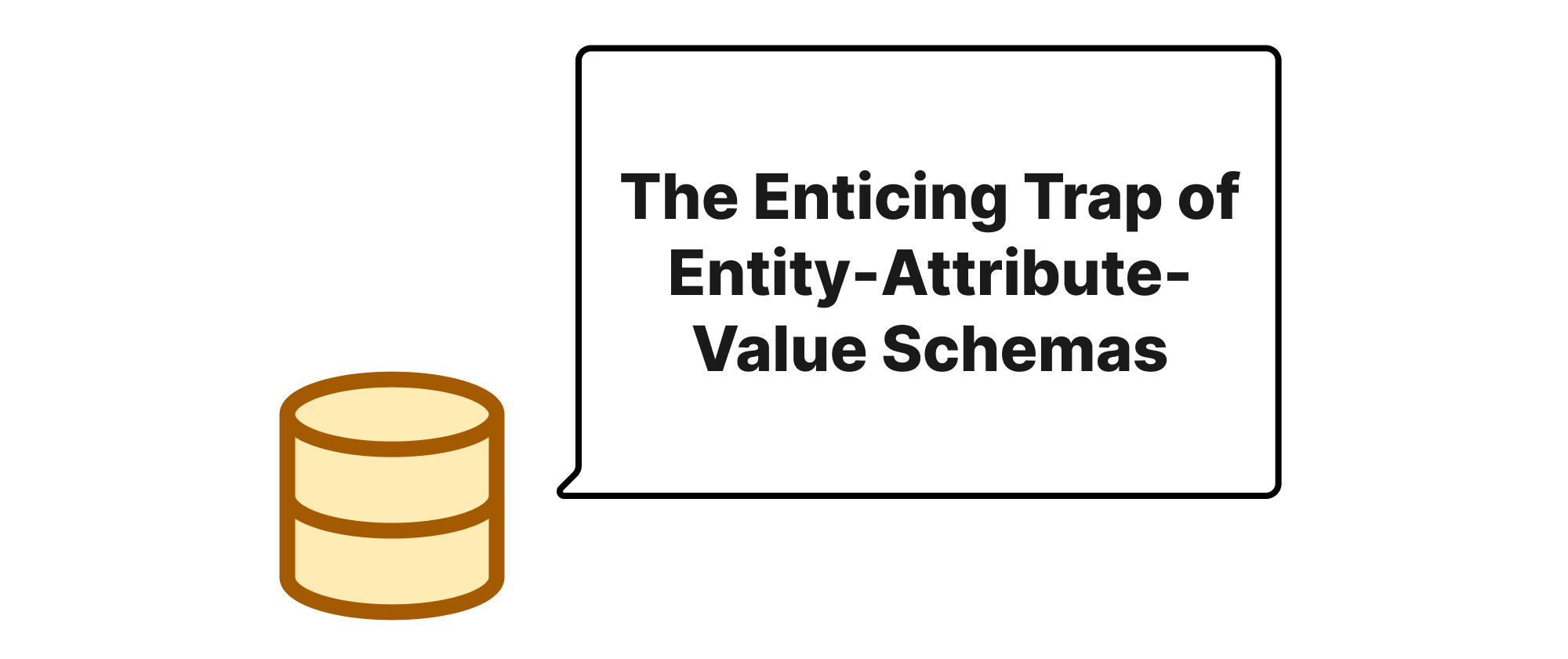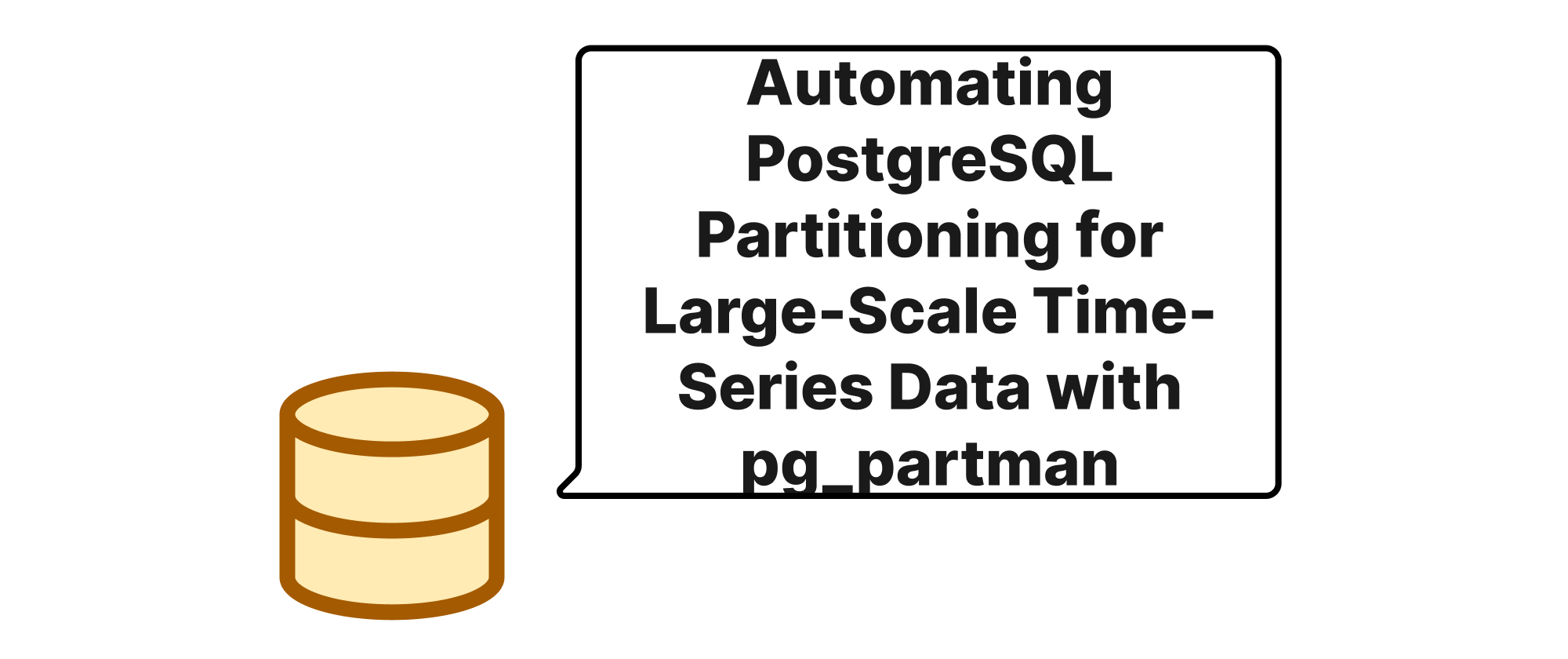The Enticing Trap of Entity-Attribute-Value Schemas
Takashi Yamamoto
Infrastructure Engineer · Leapcell

Introduction
In the ever-evolving landscape of software development, the need for flexible and adaptable data models is paramount. We often encounter scenarios where the data structure is not fully known upfront, or where new attributes might be added frequently, making traditional relational schema design feel rigid. This quest for flexibility sometimes leads developers down a seemingly promising path: the Entity-Attribute-Value (EAV) schema. On the surface, EAV appears to be the silver bullet for dynamic data, promising infinite extensibility without schema alteration. However, this initial allure often masks a host of complexities and performance bottlenecks that can turn a seemingly elegant solution into a database design nightmare. This article dives deep into the EAV model, exploring why its apparent flexibility can be so deceptive and revealing the often-hidden costs associated with its implementation.
The Allure and the Abyss of EAV
Before dissecting the problems, let's establish a clear understanding of what an EAV schema entails.
Core Terminology
- Entity (E): Represents the primary object or record in your system. For example, a "Product" or a "User". In a relational table, an entity typically corresponds to a row in the Entities table.
- Attribute (A): The characteristic or property associated with an entity. For instance, "Color," "Size," "Weight" for a Product. In an EAV model, attributes are often stored as rows in an Attributes table or simply as text values.
- Value (V): The actual data associated with a specific attribute for a particular entity. For example, "Red" for the "Color" attribute of a "Product" entity. Values are stored in a Values table, linked to both the entity and the attribute.
How EAV Works
In a traditional relational database, each attribute of an entity would typically be a column in a table.
Traditional Schema (e.g., Products table):
product_id | name | price | color | weight_kg |
|---|---|---|---|---|
| 1 | Laptop X | 1200.00 | Silver | 2.5 |
| 2 | Mouse Y | 25.00 | Black | 0.1 |
In an EAV schema, this structure is deconstructed into a set of tables, typically including:
Entitiestable: Stores the basic entity information (e.g.,product_id,product_name).Attributestable: Defines possible attributes (e.g.,attribute_id,attribute_name,data_type).Valuestable (orEntityAttributeValuetable): Links entities, attributes, and their corresponding values. This table is the core of EAV.
EAV Schema Example:
Products table (Entities):
product_id | name |
|---|---|
| 1 | Laptop X |
| 2 | Mouse Y |
Attributes table:
attribute_id | attribute_name | data_type |
|---|---|---|
| 101 | price | DECIMAL |
| 102 | color | VARCHAR |
| 103 | weight_kg | DECIMAL |
Product_Attribute_Values table (Values):
product_id | attribute_id | value_text | value_decimal |
|---|---|---|---|
| 1 | 101 | NULL | 1200.00 |
| 1 | 102 | Silver | NULL |
| 1 | 103 | NULL | 2.5 |
| 2 | 101 | NULL | 25.00 |
| 2 | 102 | Black | NULL |
| 2 | 103 | NULL | 0.1 |
Notice the value_text and value_decimal columns. A common EAV pattern uses multiple value_TYPE columns (e.g., value_int, value_date) to store different data types, as a single value column would force type coercion or sacrifice type integrity.
The Problematic Reality
While the EAV model looks incredibly flexible, its implementation quickly reveals several critical issues:
-
Data Type Management and Integrity: In a relational schema, each column has a defined data type, enforced by the database. In EAV, values are often stored as generic strings (
value_text) or in multiple type-specific columns, leading to:- Loss of Database-Level Type Enforcement: If
value_textis used for everything, the database cannot enforce that "price" is a number or "color" is text, pushing data validation logic to the application layer. - Complex Queries for Type Conversion: If multiple
value_TYPEcolumns are used, querying specific attributes requiresCASEstatements orCOALESCEfunctions (e.g.,COALESCE(value_text, CAST(value_decimal AS VARCHAR))) to retrieve the correct value, making queries convoluted.
Example (Retrieving Price):
-- EAV Query to get product price SELECT p.name, pav.value_decimal AS price FROM Products p JOIN Product_Attribute_Values pav ON p.product_id = pav.product_id JOIN Attributes a ON pav.attribute_id = a.attribute_id WHERE a.attribute_name = 'price' AND p.product_id = 1;Compare this to a simple
SELECT name, price FROM Products WHERE product_id = 1;in a traditional schema. - Loss of Database-Level Type Enforcement: If
-
Referential Integrity and Constraints: How do you enforce that a "color" attribute can only have specific predefined values (e.g., 'Red', 'Green', 'Blue')? In EAV, this becomes exceptionally difficult. Foreign keys on
valuecolumns are impractical, meaning common relational database constraints like uniqueness, nullability, and foreign key relationships are either impossible or must be laboriously enforced at the application layer. This significantly increases the risk of data inconsistencies. -
Querying and Performance: Retrieving a single entity with all its attributes involves multiple
JOINoperations, potentially one for each attribute, which can be extremely inefficient. If you need to filter or sort by an attribute, the complexity escalates.Example (Retrieving all attributes for a product):
-- EAV Query to get all attributes for a product (Pivoting) SELECT p.name, MAX(CASE WHEN a.attribute_name = 'price' THEN pav.value_decimal END) AS price, MAX(CASE WHEN a.attribute_name = 'color' THEN pav.value_text END) AS color, MAX(CASE WHEN a.attribute_name = 'weight_kg' THEN pav.value_decimal END) AS weight_kg FROM Products p JOIN Product_Attribute_Values pav ON p.product_id = pav.product_id JOIN Attributes a ON pav.attribute_id = a.attribute_id WHERE p.product_id = 1 GROUP BY p.product_id, p.name;This involves several joins and aggregation (implicit pivoting). For a large number of attributes or entities, this becomes a major performance bottleneck. Indexes on
attribute_idandproduct_idare crucial but can only mitigate the overhead to a certain extent. -
Reporting and Analytics: Complex analytical queries that aggregate data across attributes are extremely challenging in an EAV model. Generating reports that require summing up prices, averaging weights, or counting items with specific colors becomes a chore, often requiring dynamic SQL or deeply nested subqueries, which are notoriously hard to optimize.
-
Schema Evolution vs. Data Model Rigidity: While EAV promises "flexible schema evolution" by simply adding new rows to the
Attributestable, it introduces a different kind of rigidity: the schema for querying and interacting with the data. Every new attribute often requires modifying application code, report queries, or view definitions if you want to present the data in a structured, column-oriented way. The "schema" shifts from the database definition language (DDL) to the application's query logic.
When EAV Might Be Considered (and Alternatives)
Despite its drawbacks, there are niche scenarios where EAV (or similar sparse data models) might be considered, albeit with extreme caution:
- Truly Sparse and Unpredictable Data: When an entity can have hundreds or thousands of potential attributes, but any given entity only has a handful defined, and the attribute set is constantly changing (e.g., medical diagnoses, research experiments).
- External Integration (CMS/E-commerce Custom Fields): Many content management systems (CMS) and e-commerce platforms use EAV-like structures for custom fields. This is usually due to the need for end-users to define new attributes without developer intervention. In these cases, the platform handles the complexity.
Alternatives to Consider:
-
JSON/JSONB Columns (NoSQL Hybrid): Modern relational databases (PostgreSQL, MySQL 5.7+, SQL Server 2016+) offer native JSON data types. This is often a superior approach for semi-structured data, allowing you to store dynamic attributes within a single column, retaining the core entity in a relational structure.
Example (with JSONB):
-- Products table with JSONB for dynamic properties CREATE TABLE Products ( product_id SERIAL PRIMARY KEY, name VARCHAR(255) NOT NULL, base_price DECIMAL(10, 2), properties JSONB ); INSERT INTO Products (name, base_price, properties) VALUES ('Laptop X', 1200.00, '{"color": "Silver", "weight_kg": 2.5, "brand": "TechCo"}'), ('Mouse Y', 25.00, '{"color": "Black", "weight_kg": 0.1, "DPI": 1600}'); -- Querying JSONB for attributes SELECT name, base_price, properties->>'color' AS color, -- ->> extracts text (properties->'weight_kg')::DECIMAL AS weight_kg -- -> extracts JSON, cast to type FROM Products WHERE (properties->>'color') = 'Black';JSONB offers better indexing capabilities and query performance compared to classic EAV for dynamic fields, while keeping the main fixed attributes in standard columns.
-
Well-Designed Relational Schema with Extension Tables: For scenarios where groups of attributes are dynamic, but not completely arbitrary, you can use specialized "extension" tables linked by foreign keys. For example,
Products,Product_Specifications,Product_Variants. This maintains strong typing and referential integrity. -
Schema Migration Tools: Embrace the power of schema migration tools (e.g., Flyway, Liquibase, ActiveRecord Migrations). Adding columns to a traditional schema is a well-understood, often non-disruptive operation for most modern databases, especially with online DDL changes. The "overhead" of running a migration is often far less than the ongoing performance and maintenance cost of EAV.
Conclusion
The Entity-Attribute-Value (EAV) schema, while appearing to offer unparalleled flexibility for dynamic data, is a classic example of a design pattern whose initial appeal quickly gives way to significant complications. Its inherent difficulties in managing data types, enforcing integrity, performing efficient queries, and generating reports often transform it from a promising solution into a persistent database design nightmare. While there are niche cases where its use might be justified, modern database features like JSON-native types or carefully designed extension tables offer far more robust and performant alternatives, allowing developers to achieve flexibility without sacrificing the fundamental strengths of relational databases. Opt for clarity, integrity, and performance over the deceptive allure of EAV's boundless extensibility.


